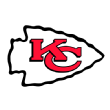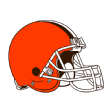Ranking the NFL's 20 biggest outlier contracts in 2020: A fullback blows away the competition again

Most public conversations about NFL contracts tell only a fraction of the story.
We talk about the total number when only a portion of most multiyear deals are guaranteed. We compare players based on skill when contracts are a product of leverage. The salary cap has been less of a hindrance in recent years thanks to steady revenue increases and better planning from teams than we saw in the first 15 years of the cap era, but with it likely falling to $175 million in 2021 as a result of missing stadium revenue, good financial management matters more than it has in years.
Each year, I try to take a closer look at which players are being paid a premium around the NFL after accounting for a couple of factors. One is adjusting contract values by looking at what they're taking home in cash over the first three years of their deal. (I only look at contracts of three years or more in this analysis.) After three years, players almost always either are done with their contact or have no guaranteed money remaining. Teams typically use that time to either get a new deal done or move on. It's not a perfect metric, as I'll get to in a minute, but I've found that three-year cash is the best way to measure the vast majority of contracts.
The other factor is positional value. Money is money when it comes to the cap, but as I wrote about in analyzing the Jamal Adams trade, the league values different positions at dramatically different levels. To get a sense of what each position across the spectrum is worth, I take an average of the 20 largest three-year cash values for each. Those numbers range from $77.9 million for quarterbacks to $6.6 million for fullbacks.
To figure out the largest contracts in football, then, we compare every deal of three years or more to the top 20 deals at each respective position. There are exactly 20 deals that are at least 30% larger than the positional averages -- those are the contracts we'll highlight here.
Before we start, there are three players you might expect to see but who aren't on this list. One is Browns pass-rusherMyles Garrett, because we don't yet have year-to-year specifics on his five-year, $125 million extension. Another is Eagles offensive tackle Lane Johnson, whose four-year, $72 million extension is more realistically an accounting exercise. The vast majority of the money in that deal is unguaranteed, off the books until 2026 and set to void if the Eagles pick up an option bonus in 2021.
The third is more surprising, because it's the guy you would expect to be No. 1: Chiefs quarterbackPatrick Mahomes. Three-year cash works as a measure for the vast majority of NFL deals because they're structured similarly in terms of length, bonus payouts and guaranteed salaries. Nobody else in the league has anything close to the 12-year, $503 million deal Mahomes just signed, but in securing guarantees through 2031, he gave up the ability to make a staggering sum of money in the short term.
He will make a little over $63.1 million in cash over the next three years, which is right in line with what Teddy Bridgewater received for the next three years in free agency from the Panthers. Players such asCarson Wentz ($81.9 million), Jared Goff ($84.6 million) and Ryan Tannehill ($91 million) all made more in the short term on their extensions. Of course, they also didn't get the same long-term guarantees. Mahomes' deal is huge, but because it's so unique, it doesn't make it onto our list.
We'll work our way up to the largest deal and give some thoughts about how those contracts have gone along the way.
Jump to a mystery player:
16. Will the Chiefs regret this deal?
11. The QB with a massive payout
7. The OT who negotiated his own deal
5. A LB who played 114 snaps in 2019
3. A Watt brother who cashed in
1. The champ is back for Year 4
20. Julio Jones, WR, Atlanta Falcons
Percent above average: 30.1%
Let's start with the only wide receiver on the list. Jones began looking for a new deal with three years to go on his previous extension in 2018, which would have been virtually unprecedented as far as new deals go. The Falcons moved some money around to give Jones a bonus that summer and then handed him a three-year, $66 million extension just before the 2019 season began. With the two years remaining on his prior deal, his contract in all amounts to five years, $87 million.
The Falcons have been a top-heavy team for several years now, and owner Arthur Blank has arguably been too generous in terms of handing out some of those deals, but you can't argue too much about paying Jones. The foot issues that could have potentially hampered him as he aged haven't been a problem; he has missed just three games to injury over the past five seasons. The Falcons are aggressive about resting Jones within games, as he typically plays only about 75% of the offensive snaps when other top wide receivers are virtually every-down players, but you can't argue with the production.
Atlanta is likely tied to Jones for three more years, but unless the 31-year-old falls off dramatically in the years to come, I would expect him to be a future Hall of Famer and a career Falcons player.
19. Aaron Rodgers, QB, Green Bay Packers
Percent above average: 32.1%
This contract, on the other hand, isn't aging quite as well. The Packers gave Rodgers a four-year, $134 million extensionin 2018, when he had two years left to go on his existing deal. Realistically, in giving Rodgers this contract, Green Bay was committing to paying him $125.5 million from 2018 to 2021 before holding two team options for a total of $50 million.
Now, it would be a surprise if Rodgers were still on the Packers' roster in 2022. While he has avoided interceptions at a historic rate over the past two seasons, the future Hall of Famer ranks 20th in QBR and 14th in adjusted net yards per attempt over that time frame. Packers fans have rightfully complained that he doesn't have many weapons after Davante Adams and Aaron Jones, but Rodgers has actually had better numbers over the past two seasons without Adams on the field.
He is still an above-average quarterback, but the Packers signaled their future plans by using a first-round pick in April on Jordan Love. Rodgers can still take over games here and there, but we haven't seen the guy who was a perennial MVP candidate for any significant length of time since 2016. I'm not sure Green Bay could have avoided paying him, but as the second-most-expensive quarterback in football by this measure, they were probably hoping for more out of their franchise icon.
18. Justin Tucker, K, Baltimore Ravens
Percent above average: 32.8%
Tucker was comfortably the league's most effective kicker on scoring plays in 2019, which is no surprise for the guy who most observers would choose as the NFL's best kicker. The Texas product was able to do that despite attempting a career-low 29 field goals, a product of Lamar Jackson's brilliance in the red zone for the Ravens.
When he signed his four-year, $20 million extension, Tucker became the first kicker in the league to average $5 million per season on a multiyear extension. The 30-year-old is under contract through the 2023 season, and given how good kickers can play into their 40s, he might not even be at the halfway point of his career with Baltimore.
17. Tyrann Mathieu, S, Kansas City Chiefs
Percent above average: 33.2%
I wrote about Mathieu's impact in my analysis of the Jamal Adams trade. I thought three years and $42 million was a little more than I would have expected for the former LSU star last offseason, but you can't argue with the results for the reigning Super Bowl champs.
16. Chris Jones, DT, Kansas City Chiefs
Percent above average: 34.1%
Back-to-back Chiefs defenders! Jones' four-year, $80 million extension just narrowly placed him ahead of DeForest Buckner's deal and made the Super Bowl LIV star one of two defensive tackles on this list. Jones' deal is really a three-year, $60 million pact, given that he has two guaranteed years of base salary at signing, while his 2022 base salary of $22.4 million guarantees at the beginning of the 2021 season. If you're looking for a mention of guarantee mechanisms in this column, here's your chance to take a drink.
There have been concerns about Jones' propensity to take plays off, and the Chiefs have been better by some measures with him off the field, but few defensive tackles are more disruptive as an interior pass-rusher. He has 24.5 sacks and 49 quarterback knockdowns over the past two seasons, which ranks second among tackles behind Aaron Donald. If defensive coordinator Steve Spagnuolo gets that sort of pass-rushing production on an annual basis, the Chiefs will be happy with this contract.
15. C.J. Ham, FB, Minnesota Vikings
Percent above average: 34.4%
One of three fullbacks to make this list, Ham, who went to high school in Minnesota, made the Vikings as an undrafted free agent in 2017. With the Vikings using bigger personnel more frequently in 2019, his role grew dramatically, as the 27-year-old went from averaging a little more than nine offensive snaps per game in 2018 to just over 22 last season.
He caught 17 passes in 2019, but his blocking ability was what led the Vikings to sign him to a four-year, $12.3 million extension in March.
14. Earl Thomas, S, Baltimore Ravens
Percent above average: 36.4%
The Seahawks didn't trade for Adams to replace Thomas, but he represents their biggest investment at safety since general manager John Schneider & Co. used a first-round pick on Thomas in 2010. The Seahawks let Thomas leave in free agency last season and netted a third-round compensatory pick, which they used to help trade up this year for Virginia defensive end Darrell Taylor.
The Ravens signed Thomas to a four-year, $55 million deal, and the star safety's role has evolved. While he still spent plenty of time in the middle of the field as a classic single-high safety, they also brought Thomas up toward the line of scrimmage far more frequently than the Seahawks had. He remained stellar in coverage. According to the Football Outsiders Almanac 2020, Thomas was targeted just 3.4% of the time and was successful on 85% of those targets, with the latter mark leading all safeties.
Thomas turned 31 in May, and injuries will be a concern after he missed 19 combined games in 2016, 2017 and 2018, but it sure seems like the Ravens are happy with their decision to sign him last offseason.
13. Austin Hooper, TE, Cleveland Browns
Percent above average: 36.6%
Hooper became the first tight end to average more than $10 million per season on a multiyear contract when the Browns gave him a four-year, $42 million deal in March. He has been a productive, versatile player, but as I noted in March, a significant amount of his production last year came in garbage time.
I think Hooper is a good player who is getting paid like a superstar because the Browns were desperate for weapons around Baker Mayfield and he was one of the few effective receivers available on the open market. This is really a two-year, $23 million pact, so the Browns can move on after 2021 if he doesn't live up to expectations.
12. Thomas Morstead, P, New Orleans Saints
Percent above average: 37%
The only punter on this list, Morstead's four-year, $15.9 million extension from 2018 is still the gold standard at the position. Johnny Hekker signed a two-year extension for $8.2 million, but that was with a whopping four years left to go on his prior deal, making him the only player in the league to sign a new extension with that much time left on his existing contract. Morstead no longer handles kickoffs for the Saints, but the SMU product ranked 10th in the league in punting production last season.
11. Russell Wilson, QB, Seattle Seahawks
Percent above average: 37.2%
While Mahomes has a much larger cumulative deal, the biggest three-year value for a quarterback contract belongs to Wilson, who will take home $107 million over the first three years of his four-year, $140 million extension. Despite a bit of drama surrounding each of his contract negotiations -- remember the hints that Wilson wanted to play baseball in 2015 -- Wilson's contracts have been straightforward and good value for the Seahawks. He was the second-best quarterback in the league last season behind Lamar Jackson.
If the Seahawks continue to follow their prior path with Wilson, these two sides will be in line to start negotiating an extension before the 2023 season, when Wilson will be 34 years old. General manager John Schneider typically keeps his extensions at four years or fewer, so it wouldn't be shocking if Wilson signs his third consecutive four-year extension that spring.
10. Bobby Wagner, LB, Seattle Seahawks
Percent above average: 38.4%
Part of our second set of consecutive teammates, Wagner had his contract boosted when the Jets gave C.J. Mosley a five-year, $85 million contract in free agency last March. No off-ball linebacker had previously topped $14 million per year on a new deal, but the Jets deal pushed Mosley to $17 million. Wagner was then able to net a three-year, $54 million extension from the Seahawks almost exactly one year ago.
Seattle could get out of Wagner's deal after 2020 while owing $7.5 million in dead money, but there's little reason to think it would consider that sort of move. Wagner remains a wildly productive and essential member of this defense. According to Football Outsiders, he made 20.4% of the plays for his defense last season, the highest rate for any linebacker in football. Given how hesitant the Seahawks have been to extend defenders in their 30s, though, I wonder whether the move to use a first-round pick on Jordyn Brooks was in part to replace Wagner in the middle after the future Hall of Famer's contract runs out at the end of 2022.
9. Andrew Norwell, G, Jacksonville Jaguars
Percent above average: 40%
When the Jaguars signed Norwell to a five-year, $66.5 million contract in 2018, they were coming off a division title and a trip to the AFC Championship Game. Former top executive Tom Coughlin saw Norwell as one of the final pieces to the puzzle as Jacksonville planned on building its offense around the powerful running of Leonard Fournette. Norwell himself had just been named a first-team All-Pro after a dominant season blocking for Panthers franchise quarterback Cam Newton.
A lot can change in two years. Norwell's deal hasn't worked out, in part because of an ankle injury that cost the Ohio State product the final four games in 2018. The Jaguars had typically handed out contracts with two years of guaranteed base salary to free agents in order to retain some flexibility under general manager Dave Caldwell, but in an attempt to fit Norwell in under a rapidly rising cap, they handed Norwell a $15 million signing bonus. As a result, even after restructuring Norwell's deal this year, they're stuck paying him his $9 million base salary in 2020 because it wouldn't make financial sense to cut the 28-year-old. He is a solid guard, but the Jags paid him like he was one of the top players at his position based on his 2017 campaign. Norwell hasn't made it back to that level.
8. Khalil Mack, EDGE, Chicago Bears
Percent above average: 41.9%
Teams have traded two first-round picks for young players four times over the past three years. Two of those players are in the top eight, and when Jamal Adams and Jalen Ramsey get their extensions, I suspect they'll also be on this list. Mack was able to leverage the Bears' trade into a six-year, $141 million extension. He's going to pocket $73.3 million over the first three years of that deal, which is more than $8 million ahead of any other edge player and more than $12 million ahead of Von Miller, who was the leader among edge rushers when Mack signed his deal in September 2018.
While the Bears weren't able to address quarterback or their offensive line through the draft over the past two seasons, Mack is a great player. He wasn't quite as productive as a pass-rusher in 2019, as he went from averaging one sack every 60.4 snaps to one every 108.8 snaps, but even a relatively down season for him is still excellent. I'm not sure anybody can live up to this deal after you account for the surplus value of the picks the Bears sent to the Raiders, but the Bears have gotten the Mack they would have hoped to see back when they made this trade.
7. Laremy Tunsil, OT, Houston Texans
Percent above average: 42.4%
Here's the other trade acquisition on this list. Tunsil led the league in penalties in his debut season with the Texans, but many of those were false starts as opposed to more damaging holding calls. He was also otherwise a productive left tackle, with Football Outsiders crediting him for one lone blown block leading to a sack. The additions of Tunsil and Kenny Stills helped get the Texans out of the first round for the second time in the Bill O'Brien era, although Houston wasn't able to hold on to a 24-0 lead in the divisional round before getting blown out by the Chiefs.
The Texans weren't able to do much to address their issues on defense this offseason, in part because they were missing their first-round pick from the Tunsil trade. Unlike the Mack deal, Houston also agreed to make the Tunsil trade without signing its new tackle to a contract extension. Tunsil played out the fourth year of his rookie contract in 2019 and then negotiated a three-year, $66 million extensionafter the playoffs. In all, he will make $76.4 million over the next four seasons with Houston.
While the Texans are happy to have a critical position locked up for the next few years, this was a player-friendly deal. He will make $57.9 million over the first three years of his deal, more than $7 million ahead of any other tackle. His $22 million average annual salary is more than $5 million ahead of that of any other tackle besides Lane Johnson, whose contract isn't comparable. Tunsil will also have the chance to hit free agency before he turns 30 in 2024, which should set him up for a mammoth third contract. Not bad for a deal he negotiated himself.
6. Landon Collins, S, Washington Football Team
Percent above average: 42.8%
While I think Adams is a better player than Collins, it's worth remembering that we were having many of the same conversations about the then-Giants star as a difference-making strong safety after the 2017 season, when he finished third in the Defensive Player of the Year balloting. Collins hasn't been quite as productive over the ensuing years, but the six-year, $84 million deal he signed with Washington in free agency paid him as if he was that sort of difference-maker at safety.
Washington was a mess in the secondary last season, but Collins has always been best as a defender in and around the line of scrimmage, which isn't as valuable as it once was in a pass-happy league. After allowing a passer rating of 113 in 2018, according to the advanced stats at Pro Football Reference, that mark rose to 114.5 in his debut season with Washington. (Jamal Adams rates at 74.7 and 75.2 over the past two years.) Collins is a useful player, but new coach Ron Rivera needs to unlock more seasons like that 2016 campaign from his new safety to make this contract feel like a victory for the Washington Football Team.
5. C.J. Mosley, LB, New York Jets
Percent above average: 44.3%
I don't want to suggest that the Jets have a way of somehow sucking the life out of the players they add to their roster, but consider the case of Mosley, to whom New York gave a five-year, $85 million deal in free agency last year. Over five excellent seasons in Baltimore, he missed a total of just three games to injury. The Jets went over the top to bring him to town and saw the 27-year-old rack up a pick-six in the opener against the Bills. Mosley hurt his groin later in the game, at which point the Jets blew their 16-0 lead. He missed the next four games, limped through a Monday night shellacking against the Patriots while inexplicably playing 83% of the defensive snaps, and then missed the rest of the season.
Obviously, the Jets will hope for more than 114 defensive snaps from their highest-paid player in 2020. There's every reason to think a healthy Mosley will be an excellent inside linebacker, although his contract was out of line with the market when it was signed. Of his $16 million base salary in 2021, $8 million is already guaranteed, so while the Jets could move on from him after the season, they would end up paying him $43 million for just over one season of work. It's more likely that he plays three years with the Jets for a total of $51 million before general manager Joe Douglas reevaluates things in 2022.
4. Zack Martin, G, Dallas Cowboys
Percent above average: 45%
There is precious little to report on Martin, who is the highest-paid interior lineman in the league and ... the best interior lineman in the league. It should be telling that offensive line guru Brandon Thorn listed Martin in his own tier atop his right guard rankings this offseason, with a gap between the Cowboys star and the likes of stars such asDavid DeCastro and Shaq Mason. The Hall of Fame electorate has done a subpar job of recognizing offensive linemen, but Martin is on the sort of track that even the usually oblivious can't deny.
3. Derek Watt, FB, Pittsburgh Steelers
Percent above average: 46.4%
The third-most-famous Watt brother is the only one of the bunch to make this list, although T.J. is in line for a massive extension from the Steelers in the near future. Derek Watt doesn't play frequently -- he's a special-teamer who didn't play more than 15% of the offensive snaps over the past three seasons with the Chargers -- but the Steelers gave him a three-year, $9.8 million deal in free agency to presumably serve as a more regular part of their offense. Pittsburgh used Roosevelt Nix in that role in years past and typically played him on about 10% of its offensive snaps, so Watt will either need to expand his role or turn into prime Tom Rathman to deliver a return on this deal.
If that's true, Watt's role in the offense should rise. Patrick Ricard, for example, was on the field on offense 31% of the time for the Ravens last season. There's no guaranteed money in Watt's contract after this year, so it's really a one-year, $4.3 million deal with a couple of team options attached. While it might not sound like all that much money when you consider what the likes of Mosley and Mack are making, it's a lot for a fullback.
2. Aaron Donald, DT, Los Angeles Rams
Percent above average:49.8%
While general manager Les Snead has regretted some of the contracts he has handed out over the past few years -- Todd Gurley made this list last year -- the Rams have no such qualms about the six-year, $135 million extension Donald signed before the 2018 season. The star defensive tackle was coming off a Defensive Player of the Year campaign when he signed a new deal and then repeated the feat the following year. While his pass-rushing production was down last season, he led all tackles in pass rush win rate and was double-teamed on a league-high 295 snaps. When defenses dared to try to stop him one-on-one, he posted the second-best win rate of any pass-rusher in football at 37.8%.
Over the past three seasons, Donald ranks second in sacks behind Chandler Jones. The only pass-rusher to create more sacks over that time frame, either for himself or somebody else, is Khalil Mack. Donald leads all players in quarterback knockdowns (92 -- 14 more than anybody else) and tackles for loss (60 -- eight more than anybody else) over that stretch. Don't let the Rams' 2019 downturn fool you. This is still the NFL's most valuable non-quarterback.
1. Kyle Juszczyk, FB, San Francisco 49ers
Percent above average: 132%
Well, well, well. For the past three years, Juszczyk has led this list by a considerable margin. The gap between him and the rest of the pack has fallen after the Watt and Ham contracts were signed, but there's still a huge space between the 49ers' fullback and everyone else in the league. Over the past two seasons, I've made arguments that Juszczyk hasn't lived up to the expectations the 49ers had when they made him the highest-paid fullback in the league by a significant margin. I can't make those same arguments about 2019.
Juszczyk was a productive player in a great offense. To start with the simple stuff, he fumbled four times on just 78 touches between 2017 and 2018, the sort of astronomical rate that makes it exceedingly difficult to be valuable with the ball in your hands. Last season, he didn't fumble in his 23 touches and turned 12 of those touches into first downs. He added a touchdown and two first downs on three catches in the Super Bowl.
You can add only so much value with 1.4 touches per game, but Juszczyk was effective when the 49ers gave him the football. He also drew the most ridiculous pass interference penalty of the year while diving for a catch, which deserves points for hustling the referees.
There was also evidence that the 49ers were a better offense when he was on the field. They ranked last in rushing DVOA in 2018, making it hard to argue that Juszczyk's blocking was really making a significant difference, but they rose all the way to 12th this past season. The Athletic's Ben Baldwin noted that the 49ers were the best offense in football in terms of expected points added (EPA) per play when both Juszczyk and George Kittle were on the field, and while the offense fell back toward the pack when Juszczyk was out there without the star tight end, they were actually better with only him than they were with only Kittle. Football Outsiders' Aaron Schatz pointed out that San Francisco's rushing attack fell off dramatically by DVOA over its six-week stretch without Kittle and/or Juszczyk, only to become the best attack in football after they both returned.
With 2019 baked into the numbers, the 49ers have now been better over the past three seasons with Juszczyk on the field. They average 0.06 expected points per play with him on the field and minus-0.02 expected points per play with him on the sidelines. What's interesting, though, is that they've actually been worse by EPA with him on the field for run plays. Despite all of the talk about angles, all of the EPA improvement comes when he is on the field for passing plays. Last year, for example, they averaged 0.4 expected points per pass play with Juszczyk on the field, but just 0.09 EPA per play when he wasn't around. That's a huge difference.
While he can be an effective receiver, I don't think teams were doubling him out of the backfield and letting Deebo Samuel and Emmanuel Sanders run free. The threat of being overrun by the 49ers' running game out of 21 personnel was creating big passing opportunities. Juszczyk deserves some of the credit for that threat, but how much of it is Kyle Shanahan's scheme as opposed to one individual fullback?
That question is where things get tough. As Warren Sharp pointed out on Twitter recently, many of the teams who used fullbacks at significant rates made it to the postseason. To pick one as an example, let's look at rookie Andrew Beck, who served as the fullback for the Broncos under former 49ers assistant Rich Scangarello last season. Beck had nine catches for 90 yards, but he wasn't a significant receiving threat. He doesn't have a 10th of Juszczyk's reputation as a blocker.
And yet the Broncos were also significantly better in the passing game with Beck, averaging 0.28 expected points per passing play with Beck on the field and minus-0.09 EPA per play with their fullback on the sidelines. In 2016, when Shanahan's offense helped Matt Ryan win league MVP, their fullback was Patrick DiMarco. Again, the offense was better throwing the ball with their fullback on the field, averaging 0.49 EPA per pass play with DiMarco between the lines and 0.25 EPA per pass play without him.
The 49ers could have signed DiMarco as a free agent when Shanahan took over in 2017, but they paid two and a half times as much to sign Juszczyk from the Ravens instead. Is he the better player? I think so. Is the difference as dramatic as the difference in price tag between him and the majority of the fullbacks in the league? Probably not. At the end of the day, the 49ers could scout a fullback, plug him in and probably do just fine at a fraction of the cost. If you think Shanahan and Juszczyk deserve the benefit of the doubt after last year, well, I wouldn't blame you, either.
At the end of the day, San Francisco had an excellent offense in 2019, and Juszczyk played a meaningful role in that success. The 49ers have picked up Juszczyk's option for 2020, and it wouldn't be shocking if they gave him a new contract as he enters the final year of his deal. If so, we'll be back in this space to take another look at the Juszczyk Era in San Francisco after this upcoming season.
Related Video
Related Topics
- SPORTS
- ESPN
- TYRANN MATHIEU
- BOBBY WAGNER
- LOS ANGELES-RAMS
- RUSSELL WILSON
- LAREMY TUNSIL
- CJ MOSLEY
- BILL BARNWELL
- EARL THOMAS-III
- KYLE JUSZCZYK
- LANDON COLLINS
- SAN FRANCISCO-49ERS
- DEREK WATT
- ZACK MARTIN
- NFL
- JULIO JONES
- DAILY
- AARON DONALD
- KANSAS CITY-CHIEFS
- SEATTLE SEAHAWKS
- ANDREW NORWELL
- CHRIS JONES
- KHALIL MACK






















